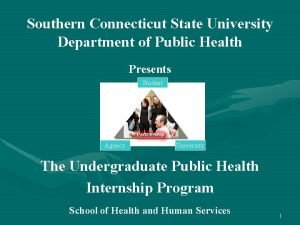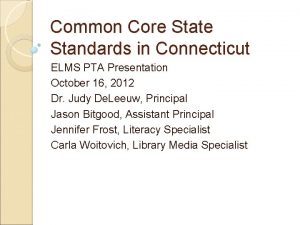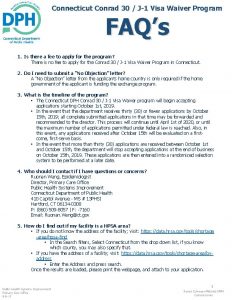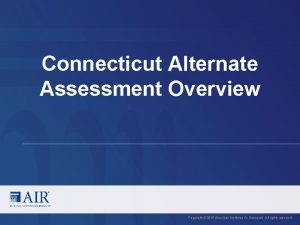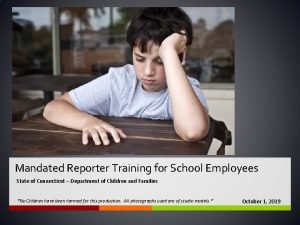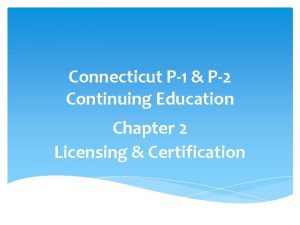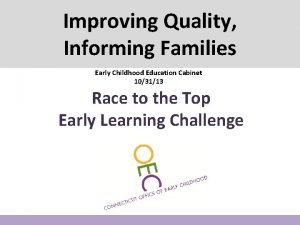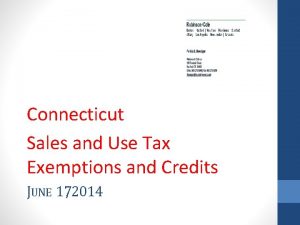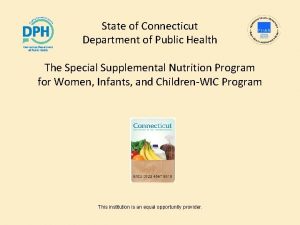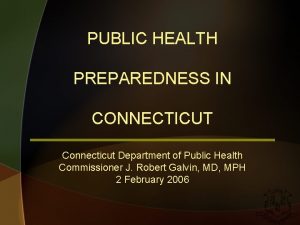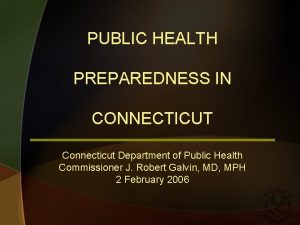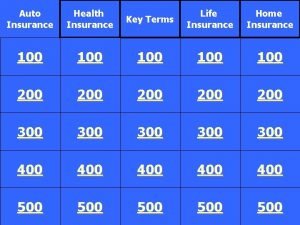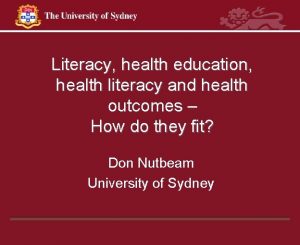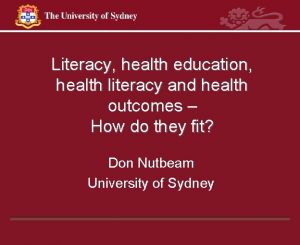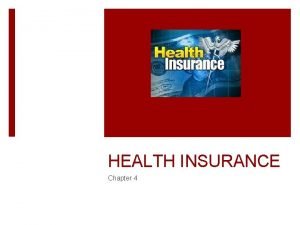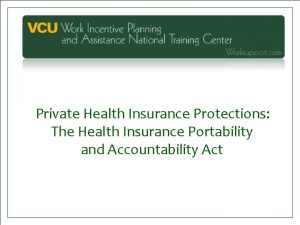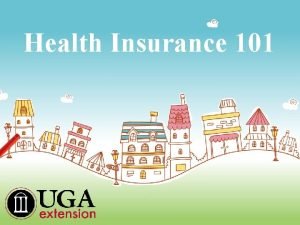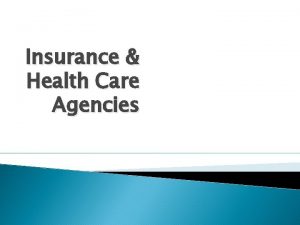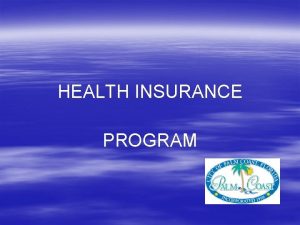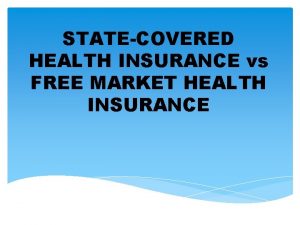Increasing Health Insurance Literacy in CT The Connecticut




























- Slides: 28

Increasing Health Insurance Literacy in CT: The Connecticut Association for Adult and Continuing Education October 13, 2017 Denise Octavia Smith, MBA, CHW, PN

What We Will Do Today • Learn about the Health Disparities Institute • Discuss the intersection of health and education • Explore health insurance literacy data and concepts • Think about why this matters to adult education students and how we can help them • Discuss potential barriers and strategies for implementation

Health Disparities Institute (HDI) • Created by Connecticut General Statute in 2011 • Developed to enhance research and the delivery of care to minority and medically underserved populations of the state • Taking ideas known to work and transforming them into policy and action Research Acknowledgement Victor Villagra, MD Emil Coman, Ph. D Bhumika Bhuva, MPH

Health and Education Health is shaped by our behaviors, genetics and the social determinants of health (economic, physical, psychological, education, food, community and health environments) Source: Centers for Disease Control and Prevention


Source: Taylor SE Dev Psychopathol. 2011

Health & Adult High School Graduates Adults with a high school degree or less were at significant or increased risk for reporting: • Fair or poor general health • Poor physical and mental health • Living with a disability and being obese • Limited health care coverage and no healthcare insurance • Lower prevalence of leisure time physical activity and seatbelt use • Higher prevalence of smoking cigarettes and e-cigarettes • Not having cervical or colorectal cancer screening • Reduced dental visits or flu vaccination in the past year • Higher prevalence of a number of chronic conditions, including arthritis, cancer, cardiovascular disease, COPD, diabetes, and depression Source: 2015 CT BRFFS CT Department of Public Health

What is Health Insurance Literacy? Definition: The degree to which individuals have the knowledge, ability, and confidence to find and evaluate information about health plans, select the best plan for their financial and health circumstances, and use the plan once enrolled (Quincy, 2010) Understanding health insurance is central to affording and accessing health care in the United States (AIR, 2014)

ACA Demand & Experience Mismatch Newly Insured System Demands • Enrollment/Re-enrollment • • Majority have incomes below 400% Working families with part time jobs 1 in 3 have problems paying medical bills Difficulty paying their premiums Selected plan by cost over benefits 2/3 rds have no usual source of care 50% had no routine checkup in past year • Churn/Eligibility/MAGI • Consumer Directed Health Plans • Patient-provider partnership • High/Low Value Care • Decision support tools • Navigation Source: Kaiser 2015

Health Disparities Institute Approach

Sample Composition • Sample Size/Source: 516 enrollees from 66, 000+ adults with an Access Health CT qualified health • Sampling Method: designed to detect potential race/ethnicity disparities • Sample Demographics: 49% White (vs. 70% census), 24% Blacks (vs. 10% census) and 27% Hispanics (vs. 14% census) • 82% completed survey in English • 18% completed survey in Spanish

HIL Survey Methodology • 13 vocabulary and practical use questions • Constructed to facilitate comparisons with national data • 25 minute phone interviews with selection of English or Spanish language preference

Summary of HIL Survey Results CT adults averaged 62% (8 out of 13) questions correct • 74% among Whites • 53% among Blacks • 50% among Hispanics • 80% among English speakers • 50% among Spanish speakers After adjusting for income and educational level HIL differences between Blacks vs. Whites and Hispanics vs. Whites remained statistically significant.

CT Compared to National Data Source: Kaiser Family Foundation, Assessing Americans Familiarity with Health Insurance Terms and Concepts October 2014

HIL Results by Education Levels

HIL Results by Race, Ethnicity and Language

Racial, Ethnic and Educational Disparity

Who Needs Health Insurance Literacy? Our survey demonstrated that there are HIL gaps and that disparity based on race/ethnicity and language preference are especially pronounced People with a high school diploma or less People who primary/preferred language is not English People of color (Black and Hispanics in our survey) All Connecticut residents People with less experience with employer sponsored insurance

Our Students Need Health Insurance Literacy Over 322, 000 CT residents are without a high school diploma and more than 120, 000 do not speak English well. • • • People of color: 11, 000 (H), 4, 000 (B), 1600 (A/PI) 9, 600 immigrants (may speak a language other than English) 13, 000 unemployed (may qualify for Medicaid or be uninsured) • 8, 551 employed (may have insurance) • 2, 856 want to enhance their family's literacy • 8, 940 want to learn to use community services

Let’s Discuss… Questions about the data or findings?

Strategies for Implementation • Domains of Health Insurance Literacy • Champions for the Cause • How You Can Help HDI • How HDI Can Help You

How Health Insurance Literacy Helps • • • Determine when and how much of a service is covered by their plan Calculate their out of pocket costs Save money on prescription drugs, doctors’ visits, ER, hospitalizations and preventive services • Navigate complex plan designs • Avoid surprise medical bills • Reduce time-consuming administrative hassles • Access rights and protections • Use health insurance to achieve personal health goals

Source: Paez et al. , Journal of Health Communication, 2014

Let’s Discuss… How are you currently addressing these domains? What domains might you prioritize for your students?

Champions for the Cause • Identify Champions • Commit to Incorporating Health Insurance Literacy • Identify opportunities for health insurance literacy improvements • Develop an action plan Source: Making Health Literacy Real, Centers for Disease Control and Prevention

How You Can Help HDI • • Implement our survey or collect data about the health insurance literacy of your students Help us to reach students from underserved language and cultural backgrounds Create focus group environments where we can test out new educational content Seek out our input for implementation

How HDI Can Help You • Analyze student data to identify HIL gaps • Make trusted educational resources available • • Support your Champions in their plan development and implementation Link your centers to community resources to support student health and well being

Questions? Denise Octavia Smith, MBA, CHW, PN Research Associate and Projects Manager UCONN Health Disparities Institute desmith@uchc. edu
 Connecticut surplus lines tax
Connecticut surplus lines tax Public health internships ct
Public health internships ct Comparison of media literacy and information literacy
Comparison of media literacy and information literacy Mil curriculum guide
Mil curriculum guide What are the 6 characteristics of people media
What are the 6 characteristics of people media Cyber literacy for the digital age
Cyber literacy for the digital age Nature of fire insurance
Nature of fire insurance Connecticut compromise
Connecticut compromise Sexting laws in ct
Sexting laws in ct Lean manufacturing connecticut
Lean manufacturing connecticut Connecticut college transfer
Connecticut college transfer Connecticut common core state standards
Connecticut common core state standards Connecticut sex offender registry
Connecticut sex offender registry Vanderman manufacturing company
Vanderman manufacturing company Vinelink ct
Vinelink ct New haven connecticut
New haven connecticut Connecticut conrad 30
Connecticut conrad 30 Ctsecurebrowser
Ctsecurebrowser Ct mandated reporter training
Ct mandated reporter training Ct p2 continuing education
Ct p2 continuing education Boddie v. connecticut
Boddie v. connecticut Connecticut early childhood education cabinet
Connecticut early childhood education cabinet Connecticut coastline length
Connecticut coastline length Connecticut sales tax exemptions
Connecticut sales tax exemptions Connecticut judicial branch
Connecticut judicial branch Ct educator certification lookup
Ct educator certification lookup Connecticut state comptroller
Connecticut state comptroller Wic juice
Wic juice Connecticut judicial districts
Connecticut judicial districts

